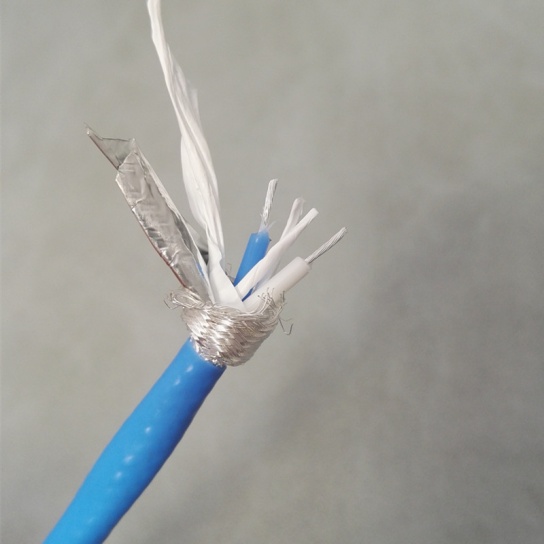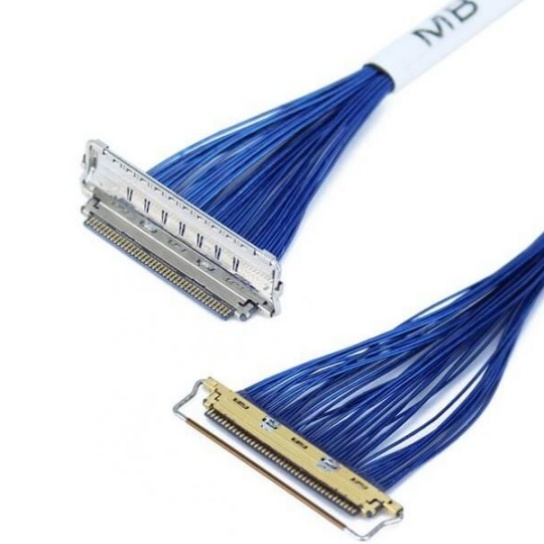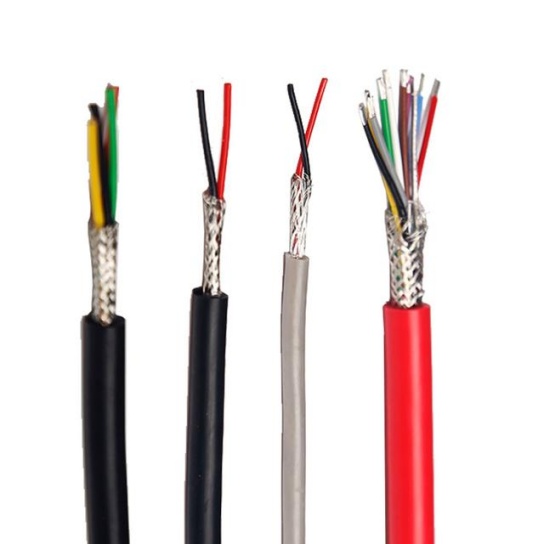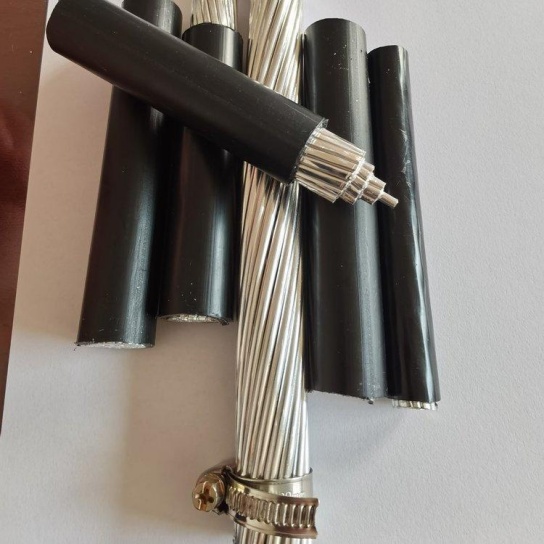The Role of Aircraft Cable Assemblies in Flight Control Systems
Flight control systems are the “nervous system” of an aircraft, dictating its ability to take off, cruise, maneuver, and land safely. Every component within these systems plays a critical role, but one element that often acts as the unsung hero—connecting key mechanisms and ensuring seamless operation—is the aircraft cable assembly. Specifically, Aircraft Cable Assemblies in Flight Control Systems serve as the physical link between the pilot’s inputs (such as yoke movements or pedal presses) and the aircraft’s control surfaces (ailerons, elevators, rudders, and flaps). Without reliable, high-performance cable assemblies, even the most advanced flight control technologies would fail to translate pilot commands into precise aircraft movements, putting safety, efficiency, and mission success at risk.
1. The Core Function of Aircraft Cable Assemblies in Flight Control Systems
At their heart, Aircraft Cable Assemblies in Flight Control Systems are responsible for two non-negotiable tasks: transmitting mechanical force and maintaining positional accuracy. Let’s break down how these functions support flight operations:
a. Translating Pilot Inputs to Control Surface Movement
When a pilot moves the control yoke to bank left, for example, the motion is transferred through a network of aircraft cable assemblies to the ailerons on the left wing. These cables—typically made of high-strength materials like stainless steel or galvanized steel—act as flexible yet robust “messengers,” ensuring that even the smallest pilot input is relayed with minimal lag. Unlike rigid mechanical links, cable assemblies can navigate the complex internal structure of an aircraft (around fuel tanks, avionics bays, and structural beams) without compromising force transmission. This flexibility is especially critical in large commercial airliners and military jets, where control surfaces may be located tens of feet from the cockpit.
b. Supporting Redundancy for Safety
Aviation safety standards (set by organizations like the FAA and EASA) mandate redundancy in flight control systems—and Aircraft Cable Assemblies in Flight Control Systems are a key part of this redundancy. Most aircraft use dual or triple cable assemblies for critical control paths (e.g., rudder control). If one cable assembly were to fail (due to extreme wear, debris, or unforeseen stress), the backup assemblies immediately take over, preventing a total loss of control. This redundancy is not just a regulatory requirement; it’s a lifeline. For instance, in 2018, a Boeing 757 experienced a partial cable failure in its elevator control system during cruise. Thanks to the redundant cable assembly, the pilot was able to maintain stable flight and land safely, highlighting the role of cable assemblies in mitigating catastrophic risks.
2. Technical Requirements for Aircraft Cable Assemblies in Flight Control Systems
Not all cable assemblies are suitable for flight control applications. Aircraft Cable Assemblies in Flight Control Systems must meet rigorous technical standards to withstand the harsh conditions of aviation, including extreme temperatures, vibration, corrosion, and mechanical stress. Below are the key specifications that define high-quality flight control cable assemblies:
a. Material Durability
The cables themselves are constructed from materials that balance strength, flexibility, and resistance to degradation. Stainless steel (such as 304 or 316 grade) is the most common choice, as it offers excellent corrosion resistance (critical for aircraft operating in humid or saltwater environments, like coastal airports or military missions over oceans) and can withstand temperatures ranging from -65°F (-54°C) to 400°F (204°C). For high-performance aircraft (e.g., supersonic jets), cables may be reinforced with titanium or carbon fiber to reduce weight while maintaining strength—weight reduction is a top priority in aviation, as it improves fuel efficiency and payload capacity.
b. Precision Manufacturing
The assembly process for Aircraft Cable Assemblies in Flight Control Systems is highly specialized. Each cable must be cut to exact lengths (tolerances as tight as ±0.01 inches) to ensure that control surfaces move uniformly. End fittings—such as swages, clevises, and turnbuckles—are crimped or forged onto the cables using computer-controlled machinery, eliminating human error and ensuring consistent load-bearing capacity. Additionally, cable assemblies undergo rigorous testing, including:
- Tensile strength testing: Ensuring cables can withstand loads up to 150% of their maximum operating force.
- Flex fatigue testing: Simulating thousands of flight cycles to confirm cables don’t develop cracks or frays.
- Environmental testing: Exposing assemblies to salt spray, extreme temperatures, and vibration to verify resistance to degradation.
c. Compatibility with Flight Control Systems
Modern flight control systems often combine mechanical cable assemblies with electronic fly-by-wire (FBW) technology. Aircraft Cable Assemblies in Flight Control Systems must integrate seamlessly with these hybrid systems. For example, in FBW-equipped aircraft like the Airbus A350, cable assemblies are used as backup for electronic sensors—if the FBW system loses power, the mechanical cables ensure the pilot retains control. This integration requires cable assemblies to meet strict dimensional and electrical shielding standards (to avoid interference with avionics) and to be compatible with the system’s overall weight and space constraints.
3. Applications Across Aircraft Types: Why Aircraft Cable Assemblies in Flight Control Systems Are Universal
Aircraft Cable Assemblies in Flight Control Systems are not limited to a single type of aircraft—they are essential across commercial, military, general aviation, and even unmanned aerial vehicle (UAV) platforms. Each application has unique demands, and cable assemblies are tailored to meet them:
a. Commercial Airliners
In large jets like the Boeing 787 or Airbus A320, Aircraft Cable Assemblies in Flight Control Systems must handle high loads (due to the size of control surfaces) and operate reliably for tens of thousands of flight hours. These assemblies are designed for low maintenance (to reduce downtime) and are coated with specialized lubricants to prevent wear in the dry, pressurized environment of the aircraft’s fuselage. Additionally, commercial airliner cable assemblies must comply with strict noise regulations—they are engineered to minimize vibration-induced noise, ensuring passenger comfort.
b. Military Aircraft
Military jets (e.g., the F-35 Lightning II) and transport planes (e.g., the C-130 Hercules) require Aircraft Cable Assemblies in Flight Control Systems that can withstand extreme stress, including high-G maneuvers, combat-related debris, and exposure to chemicals (such as jet fuel or de-icing fluids). Military-grade cable assemblies are often made with reinforced materials (like Inconel, a nickel-chromium alloy) and feature hermetic seals to prevent moisture or dust from entering the assembly. They also undergo accelerated testing to simulate the rigors of combat missions, ensuring they perform reliably in life-or-death situations.
c. General Aviation and UAVs
Smaller aircraft, such as Cessna 172s (used for flight training) or agricultural UAVs, rely on Aircraft Cable Assemblies in Flight Control Systems that are lightweight and cost-effective, without sacrificing safety. These assemblies are often simpler in design (fewer redundant paths, but still meeting basic safety standards) and are optimized for easy maintenance—critical for small operators who may not have access to specialized repair facilities. For UAVs, cable assemblies must be even lighter (to maximize flight time) and resistant to electromagnetic interference (to avoid disrupting the UAV’s navigation systems).
4. Maintenance and Longevity of Aircraft Cable Assemblies in Flight Control Systems
While Aircraft Cable Assemblies in Flight Control Systems are built to last, regular maintenance is essential to ensure their longevity and reliability. Aviation regulations require periodic inspections of cable assemblies, typically every 500–1,000 flight hours, depending on the aircraft type. Key maintenance tasks include:
- Visual inspections for fraying, corrosion, or loose end fittings.
- Tension checks to ensure cables are not too tight (which can cause premature wear) or too loose (which can lead to imprecise control).
- Lubrication of moving parts (like turnbuckles) to reduce friction.
With proper maintenance, high-quality aircraft cable assemblies can last up to 20 years or more—far longer than many other aircraft components. However, when replacement is needed, it’s critical to choose assemblies that meet the original equipment manufacturer (OEM) specifications. Using non-compliant cable assemblies can lead to control system malfunctions, regulatory violations, and safety risks.
5. FRS: Your Trusted Partner for Aircraft Cable Assemblies in Flight Control Systems
When it comes to Aircraft Cable Assemblies in Flight Control Systems, quality, reliability, and compliance are non-negotiable—and that’s exactly what FRS delivers. As a leading manufacturer of aviation-grade cable assemblies, FRS combines decades of engineering expertise with state-of-the-art manufacturing facilities to produce products that meet or exceed global aviation standards (FAA, EASA, AS9100D).
At FRS, every Aircraft Cable Assembly in Flight Control Systems is built with precision:
- We use only premium materials (stainless steel, titanium, Inconel) sourced from certified suppliers, ensuring durability in even the harshest aviation environments.
- Our manufacturing process is fully automated, with computer-controlled crimping and testing equipment that eliminates human error and guarantees consistent quality.
- Every cable assembly undergoes 100% testing—including tensile strength, flex fatigue, and environmental resistance—before it leaves our factory, so you can trust it to perform when it matters most.
FRS doesn’t just build cable assemblies—we build partnerships. We work closely with aircraft OEMs, maintenance, repair, and overhaul (MRO) providers, and military contractors to tailor Aircraft Cable Assemblies in Flight Control Systems to their unique needs. Whether you need a replacement assembly for a commercial airliner, a custom solution for a military jet, or a lightweight option for a UAV, FRS has the expertise to deliver on time and within budget.
Safety is at the core of everything we do. FRS’s commitment to quality ensures that our Aircraft Cable Assemblies in Flight Control Systems support the redundancy, precision, and reliability that aviation demands. When you choose FRS, you’re not just choosing a product—you’re choosing a partner that prioritizes your success and the safety of every flight.
For reliable, high-performance Aircraft Cable Assemblies in Flight Control Systems, look no further than FRS. Contact us today to learn how we can support your aviation needs.






